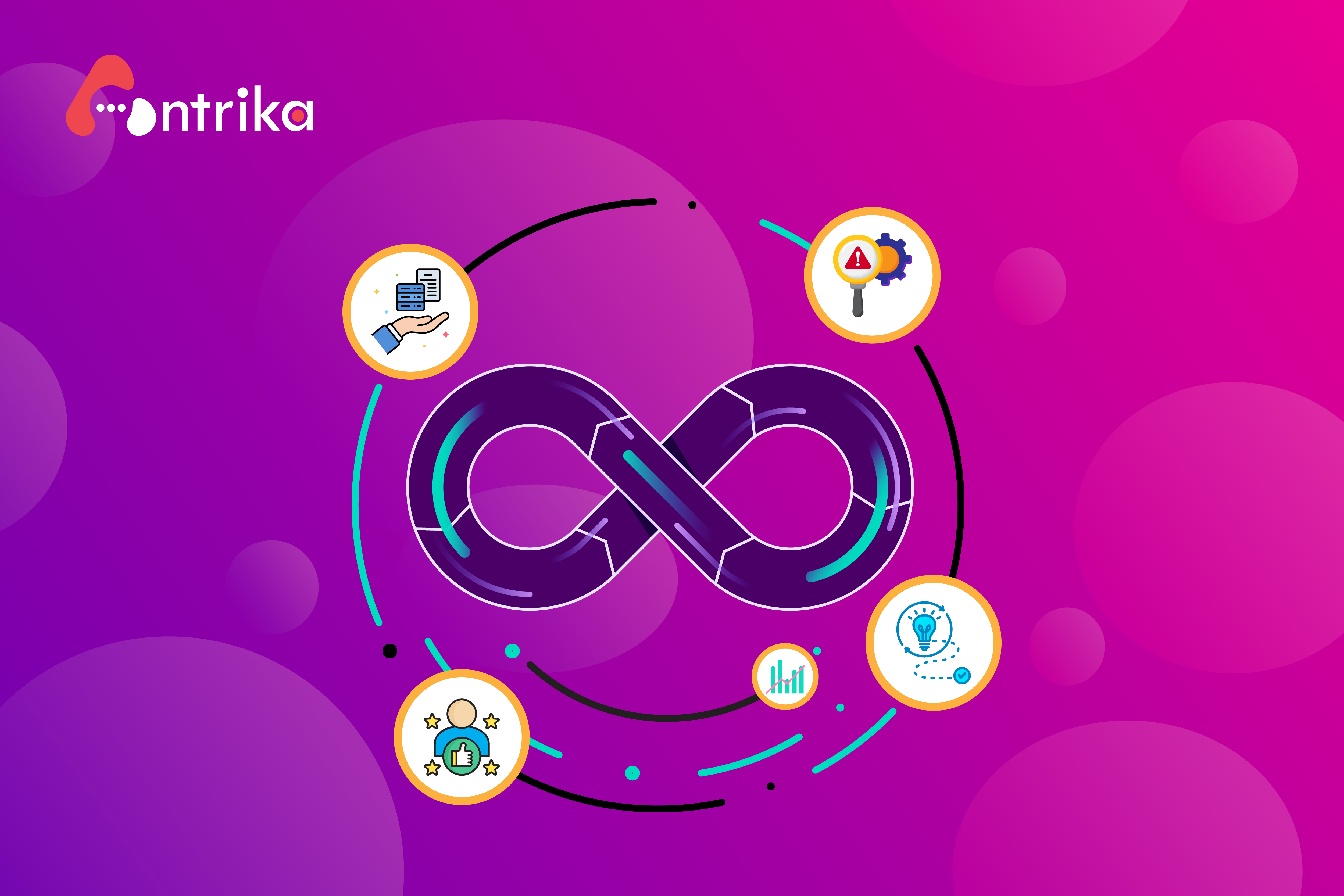
How Feedback Management Tool: Can Enhance Your Feedback Loop
Are you looking to enhance your product offerings? Don’t know how? Well, there’s no better mentor than your customers. Yes, you heard it right! Many customers are willing to share their input and experiences with your product. However, without the right communication and enhanced engagement, grabbing these inputs would seem next to impossible for any organization. That’s where a centralized feedback management tool comes into action!
However, collecting customer feedback isn’t enough to ensure that your product features are improved or that customer satisfaction and retention rates are boosted. You need to engage with customers, implement their inputs in your product roadmap cycle, develop customer-focused innovations, and then finally analyze the effectiveness of your improvements to drive expected results.
Sounds too complex? Don’t worry. In this blog, you will find everything from insights on feedback loops to understanding how to re-align strategies to reduce customer churn rates. By utilizing a review collection platform, businesses can boost ROI and improve their offerings systematically.
What is a Feedback Loop?
A customer feedback management tool is a detailed roadmap for planning scalable product improvement strategies based on your customers’ opinions, feedback, and even complaints. To keep your customers motivated to share their suggestions based on your brand and offerings, it is important for every organization to continually respond to customers, as this approach aids in enhancing trust and customer satisfaction.
By using platforms like feedback management tool, companies can identify patterns and trends based on user interactions and pick the suggestions that signal urgency or are practical to work on.
In simpler words, a feedback loop focuses on turning customer feedback into final actions to achieve an organization’s objectives by using a review collection platform. Since this loop focuses on continuous improvement, so depending on the issue or factor you select to make changes, it will inspire the upcoming loops in the future.
Find the Recurring Errors with Feedback Management Tool
Optimizing feedback loops can help businesses to fill the gap in inaccuracies in their offerings. For example, let’s assume you offer cab services, and through the feedback-collecting process, you realize that your customers aren’t satisfied with your services. Upon investigation, you found a bug in your app that fails to show customers accurate arrival cab time, and drivers need help viewing location details right after accepting the ride request.
Based on these insights, you can focus on a plan to fix these issues instantly and ensure that your customers find comfort again in every ride.
Why Do You Need to Complete a Feedback Loop?
According to research, by completing and streamlining feedback loops through customer analytics software and feedback management tool, organizations are more likely to drive 60% profit with efficiency in their offerings. Sounds too good to be true?
Well, another research states that customers are ready to spend 16% more on any product or service to enhance a better experience or when their needs and expectations are being met through your offerings. On the other hand, 32% of customers are more likely to turn away from a brand after a significant lousy experience, even if they have been loyal to your brand for years.
This is why every customer-centric company should align its objectives and efforts to improve customer satisfaction rates and focus on listening to and responding to customers’ voices.
Benefits of Closing Feedback Loop The Right Way!
According to a report published by Salesforce, 66% of customers expect a brand to fulfill their needs with the right innovations. Let’s explore a few benefits of a feedback loop aligned with a feedback management tool on your business growth.
Identifies customer needs: Without understanding what your customers are seeking, there’s no point in implementing any solution. However, through a review collection platform, you will know exactly what your customers want and expect from your brand.
Boosts customer satisfaction: Closing a feedback loop the right way will tell your customers that their voice matters to your brand. Once you respond to their concerns and update products based on their suggestions, they are more likely to stick around with you.
Minimizes customer frustration: A feedback loop makes customers feel heard, and when you respond to customer’s complaints or opinions, even if you do not plan to put actions to their inputs, they will still trust you and continue to share their experiences.
Constructs better relationships with customers: By building a culture of continuous improvements, you are more likely to develop healthy relationships with customers who stay longer. By reducing complaint ratios and constantly working to improve your offerings through customer analytics software, you are likely to enhance the contentment of end users with a feedback management tool.
Recognize potential issues: With a feedback loop through a feedback management tool, organizations can easily identify bugs and other potential issues at the right time by accessing a review collection platform. Prioritize understanding your customer’s complaints and negative feedback to fix the issues that you might have missed.
Tap to Explore more: Customer Feedback | Product Development | All in one Centralized SaaS Services
How to Optimize a Feedback Loop?
To ensure the implementation of the right strategies through feedback management tool, organizations need to follow the proper process for improved efficiency and seamlessly work for ongoing loops without any errors in the procedure. To help you understand feedback loops in detail, we are listing below a few steps that will help you outline varied feedback loops hassle-free.
1. Collect Customer Feedback with Antrika
To initiate a feedback loop, you must first collect customer feedback with a reliable platform. Multiple sources can be used to gather user feedback, such as conducting interviews and surveys, listening and observing audiences on social media, and more.
However, a centralized platform like a feedback management tool can save you time and effort. This tool helps you invite customers to share their feedback and opinions under one platform. This approach enables customers to interact with other users and helps businesses easily access data from one platform and proceed with valuable insights with feedback management tool.
2. Evaluate the Collected Data
The next step towards optimizing a feedback loop is analyzing feedback data. Consider identifying repetitive patterns in users’ suggestions or complaints. Often, businesses find it overwhelming to manage feedback data collected from varied platforms. The simple solution is integrating feedback management solutions into your system, as it helps prioritize or categorize data based on factors like product features, complaints, and more.
Identify potential issues based on a few features like the number of comments, votes, and responses on specific feedback, and take these inputs as a focus point for your current feedback loop to ensure you are urgently fixing the issue that needs action.
3. Acknowledge Your Customer’s Feedback
Remember to acknowledge your customer’s efforts to reach out to you. Consider responding to every user who has shared their experiences—positive or negative—with you. This will boost engagement with your users and build trust and loyalty with the feedback management tool.
If you plan to work on your customers’ suggestions, telling them their suggestions were valuable for your team to identify areas for improvement will make them happy. Conversely, suppose you are noticing recurring complaints about your offering. In that case, it becomes essential for you to respond promptly, as it will make customers feel their complaints are heard and work is in progress. If you ignore these complaints, there is a high chance that your users will turn away from your competitors.
4. Apply Feedback Inputs to the Product
Now, it’s time for the action! Once you have identified a core topic to focus on, share feedback on this topic with your team and initiate planning a practical roadmap. However, make sure to communicate with your stakeholders, as they can help you align the feedback data with market research and upcoming trends to make your feature or product more successful.
To improve product management with the Feedback management tool, share detailed product roadmap documents with your team and stakeholders. However, both parties must receive a separate set of plans based on their role and objectives.
5. Close the Feedback Loop
To complete the feedback loop successfully with the Feedback management tool, inform your consumers about the changes, commonly termed the changelog. Informing customers that their feedback was helpful for your brand during the product improvement journey will encourage them to share their inputs in the future and enhance customer loyalty.
Well, that’s not it. After launching the changes, companies need to conduct another set of feedback-collecting processes using customer analytics software to determine the effectiveness and success rate of their improvement or innovation. Once you have the reports on this factor, your feedback loop is closed.
Make Impact with Feedback Management Tool
Crafting optimized feedback loops makes it easier for organizations to take accurate actions and deliver solutions. By accessing what customers want and why sales results are dropping, you can seamlessly take advantage of better improvements and stay ahead of the competition with the Feedback Management Tool.
If you want to know more about feedback management tools or explore pricing plans, get in touch with us today!














